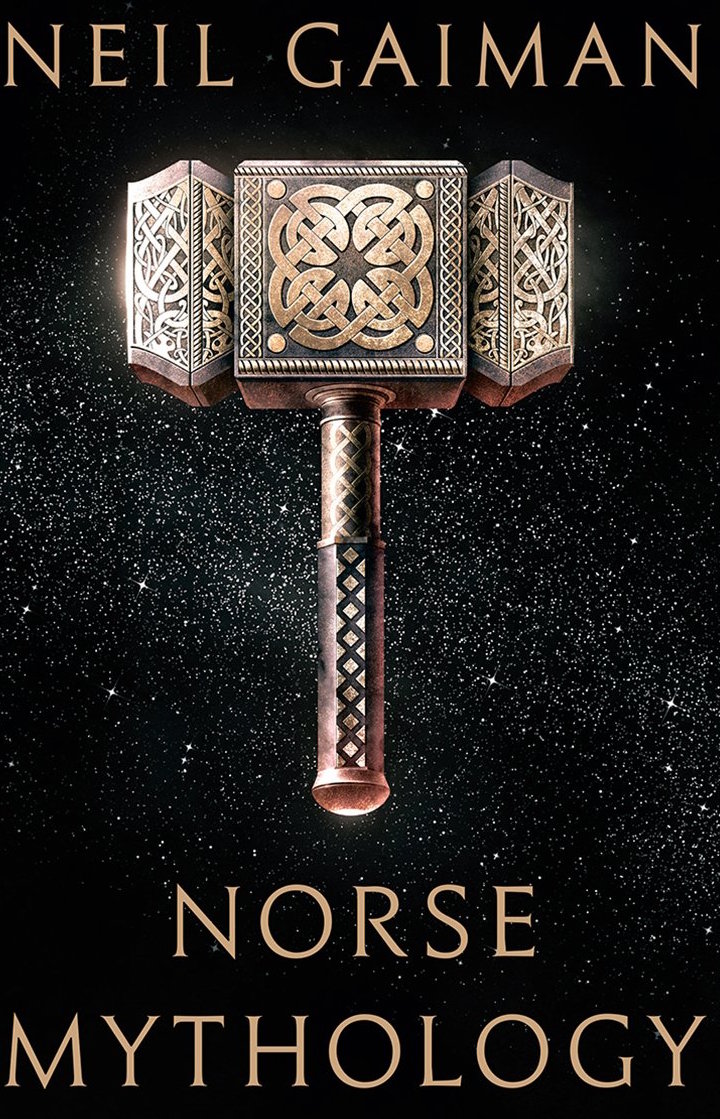Odin the All-Father, “lord of the slain, the gallows god”, has two ravens that “perch on his shoulders and whisper into his ears” as he wanders in disguise around the world. They are Huginn and Muninn, Thought and Memory. Over many centuries, the folk-stories of the northlands have lodged in our memory and shaped our thought. “Winter is coming” runs the doomy refrain of Game of Thrones, haunting the imagination of the millennial millions who have never directly heard of Ragnarok, “the end of all things”, and the big chill of the “Fimbulwinter” that will usher in apocalypse. George RR Martin has, of course. Many aficionados treat Norse mythology as the key to his A Song of Ice and Fire fantasy novels – the source of Game of Thrones. Martin’s very title signals his indebtedness.
When a single body of legend broods over a vast range of cultural expression all the way from the opera house (in Wagner’s Ring) to cult TV series and Marvel Comics – Neil Gaiman’s first exposure to the Norse pantheon – it gives each new re-interpreter both a bonus and a burden. The bonus comes first from a widespread vague familiarity with these tales of gods and monsters, of giants and elves, of trickery and treachery: “myths of a chilly place” in the shadow of a final catastrophe that will fulfil the destiny of the nine worlds “in ash and flood, in darkness and in ice”. Even people who have never read or viewed the work of a Martin or a Tolkien (that other great plunderer of the north) count their weekdays according to the names of the divine dwellers in Asgard: Tyr, Odin, Thor and Frigg. Besides, like one of those bottomless cauldrons full of magic ale that Odin and his immortal clan drain, this source never dries. “That’s the joy of myths,” writes Gaiman in his preface to his artful and enjoyable selection from the ancient yarns. “The fun comes in telling them yourself.”
As for the burden, familiarity can breed, if not contempt, then impatience. What can you bring to the feast that will surpass the feats of writers from Thomas Gray, who penned his “Norse odes” in the 18th century, and William Morris, who translated and re-imagined the Icelandic Eddas in the 19th, to modern tale-spinners such as AS Byatt, author in 2011 of the memorable Ragnarok: the End of the Gods? Gaiman reminds us that the world of Asgard is intensely competitive, with the gods and their rivals – mighty giants, clever dwarfs, enigmatic elves – striving to outdo one another in contests of skill and strength. Most of his 15 stories, which run from the pre-creation “void” made up of mist and fire to the “final battle” of Ragnarok, with its promise of rebirth after armageddon, turn on ordeals and challenges. In order to retrieve his stolen weapon, for example, muscle-bound, hammer-swinging Thor has to don fairly unconvincing drag, pretend to be the beauteous, golden-tressed Freya, and set off to marry Thrym, “lord of all the ogres”. The wedding banquet does not go well, as Thor conspicuously fails to get in touch with his feminine side.
In taking on the mantle of these archetypal tales, the author of the Sandman graphic novels, of Coraline, American Gods and The Graveyard Book has set himself just such a public challenge. How does he fare? The boy doesn’t do too badly at all – as the laconic divinities of Aesir might, grudgingly, admit. In contrast to the Morris and Tolkien tradition, he avoids neo-medieval splendour and sentiment in favour of a swift, terse and often ironic narrative voice - much closer, arguably, to the Icelandic austerity of Snorri Sturluson’s 13th-century Prose Edda.
archetypal tales, the author of the Sandman graphic novels, of Coraline, American Gods and The Graveyard Book has set himself just such a public challenge. How does he fare? The boy doesn’t do too badly at all – as the laconic divinities of Aesir might, grudgingly, admit. In contrast to the Morris and Tolkien tradition, he avoids neo-medieval splendour and sentiment in favour of a swift, terse and often ironic narrative voice - much closer, arguably, to the Icelandic austerity of Snorri Sturluson’s 13th-century Prose Edda.
Gaiman writes that he chose not to revisit other modern versions – Kevin Crossley-Holland’s more lavish and lyrical Penguin Book of Norse Myths, for instance – but dived into the earliest, medieval streams of these stories. He selects frugally (fewer than half of Crossley-Holland’s 32 myths), writes sparely, and seldom overdoses on the “mead of poetry”: an art, we learn, snatched from the dwarfs and giants only “with dishonour and deceit, with murder and trickery”. Above all, he channels the wiliness and wit of Loki, the “crafty troublemaker” among the gods, rather than aiming for a high-volume macho epic style of the sort that Thor might appreciate.
Via deadpan dialogue, bathos and repartee, the story-telling cuts gods down to size: a frequent enough event, as monsters and disasters often get the better of them. “How’s Freya?” Thrym the ogre-king asks Loki. “‘Is she as beautiful as they say?’ ‘If you like that sort of thing,’ said Loki. ‘Oh, I do,’ said the ogre. ‘I do.’” When it occasionally misfires, his comic deflations can lend the stories an air of sitcom or even pantomime. After his wife pleads with the giant-king Hymir to be nice to Thor, Hymir roars that “I am grim of mind and wrathful of spirit and have no desire to be nice to anyone.” Sometimes we’re not so far from the smart-ass, adult-tickling one-liners strewn through new-wave Disney animations.
Gaiman can, and does, raise his rhetorical game when the material demands. Loki's accursed daughter Hel, for example, rules over the ignoble underworld that still bears her name among us with “skin that was blotched and striated, swollen in the bruises of death, her sightless eye rotted and pale, her lipless mouth wizened and stretched over skull-brown teeth”. Premonitions of Ragnarok, meanwhile, drive Gaiman's prose to heights of dread as his story-teller foresees the eclipse of humanity and divinity alike in “the age of cruel winds, the age of people who become as wolves”. Throughout the 20th century, the apocalyptic last battle envisaged in the tales of the northmen stirred the imagination of writers and artists who had endured their own era of total war. At this moment in the 21st, Ragnarok can sometimes feel as imminent as ever. Gaiman makes a spine-tingling contemporary guide to the “end times” and the twilight of the gods.
- Norse Mythology by Neil Gaiman (Bloomsbury, £20)
- More book reviews on theartsdesk















Add comment